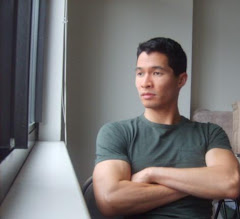In preparation for my death-defying match on which a whole twenty dollars of my instructor's money was riding, I needed an edge. Although my lunges and speed were slowly improving, I was still having trouble with my grip on the foil. No matter how many different ways I switched my handle, the foil would always tip slightly upwards whenever making contact with a target, causing my aim to falter ever so slightly.
So far, I'd been using the traditional French grip, consisting of a handle that's contoured to fit the curve of the hand and allows a practitioner to "post," or hold the foil closer to the pommel rather than the hilt. Typically, the French grip is used by beginners such as myself. While it's allowed me to increase my speed during sparring, it often tends to bend upwards, forcing me to constantly re-focus my aim.
"For your sparring match, we'll need to try something a little different," my instructor pondered as we perused the rack of neatly lined foils, épées and sabers. "Something that can give you a little more stability." She pulled a foil from the rack, its blade gleaming in the light as it slid out with a smooth swish. She pulled another one from the rack and whirled both of them upside down to show me their handles. "Otto," she announced, "meet the Visconti and the Belgian."
And so began another fascinating lecture into the intricacies of the fencing grip and how the subtle differences between them can translate into huge advantages for a fencer. Unlike the French grip, the Visconti and Belgian foils are armed with pistol grips, which are contoured to be held literally like a pistol. This particular type of grip was developed in the nineteenth century by an Italian aristocrat and fencing master who lived in Belgium and is referred to by my instructor as "Monsieur Visconti" and on the Internet only as "L. Visconti" (not to be confused with the other aristocrat and famous opera director, Luchino Visconti). The elusive master was apparently a great advocate for the art of fencing and developed the pistol grip after losing several of his fingers in a tram accident. Over the years, several varieties of the pistol grip developed, including the Russian, American, Chinese and German grips, just to name a few.
"So, what's the difference between the Visconti and the Belgian," I asked, cocking my head at the two seemingly similar handles. As my instructor so eloquently explained, the Visconti grip has a trigger-like knotch on the top of its handle (much like the hammer on a six-shooter) that a fencer grips with the thumb and index finger. This provides greater dexterity in whipping or flicking the foil during a match in a hammer-like fashion. Conversely, the Belgian's trigger-like knotch is on the bottom of the handle and is meant to be gripped by the middle finger, which provides more balance and stability for the sword hand.
I gripped the Visconti and the Belgian in each hand, feeling my fingers tighten around the trigger knotches and whirling each one around in small disengages and lunges, like a deadlier version of Edward Scissorhands. My instructor stepped in front of me, and we sparred using each grip to see which one best suited my style. As we parried and lunged back and forth, the Visconti grip certainly seemed to provide more flexibility in my parries and more stability in my wrist whenever I would lunge, with which my instructor agreed. Back and forth we went with the Visconti, our blades slicing through the air and clashing together as we danced about.
My instructor disengaged under my blade and thrust forward, a move which had normally caught me off guard in the past. However, with the different grip of the Visconti, I gained a good half second of speed on my parry, enabling me to block her blade just before it landed on my chest. I then countered with a strong lunge, my wrist feeling much steadier with the pistol grip as my blade made a quick, flashing beeline towards my instructor's chest.
"Good," my instructor smiled as I landed a quick hit onto the grey patch upon her chest pad. "How does that grip feel?"
"I feel like I can move my wrist a lot faster with the parries," I observed, "and it feels a little lighter in my hand."
"I agree," my instructor said. "The Visconti seems to suit you better in a fight."
I whirled the Visconti foil in the air a few more times, feeling the increased dexterity and flexibility, savoring the possibility that this could be my secret weapon during my upcoming battle.
Now let's see how this holds up in a real sparring match....
Now let's see how this holds up in a real sparring match....

